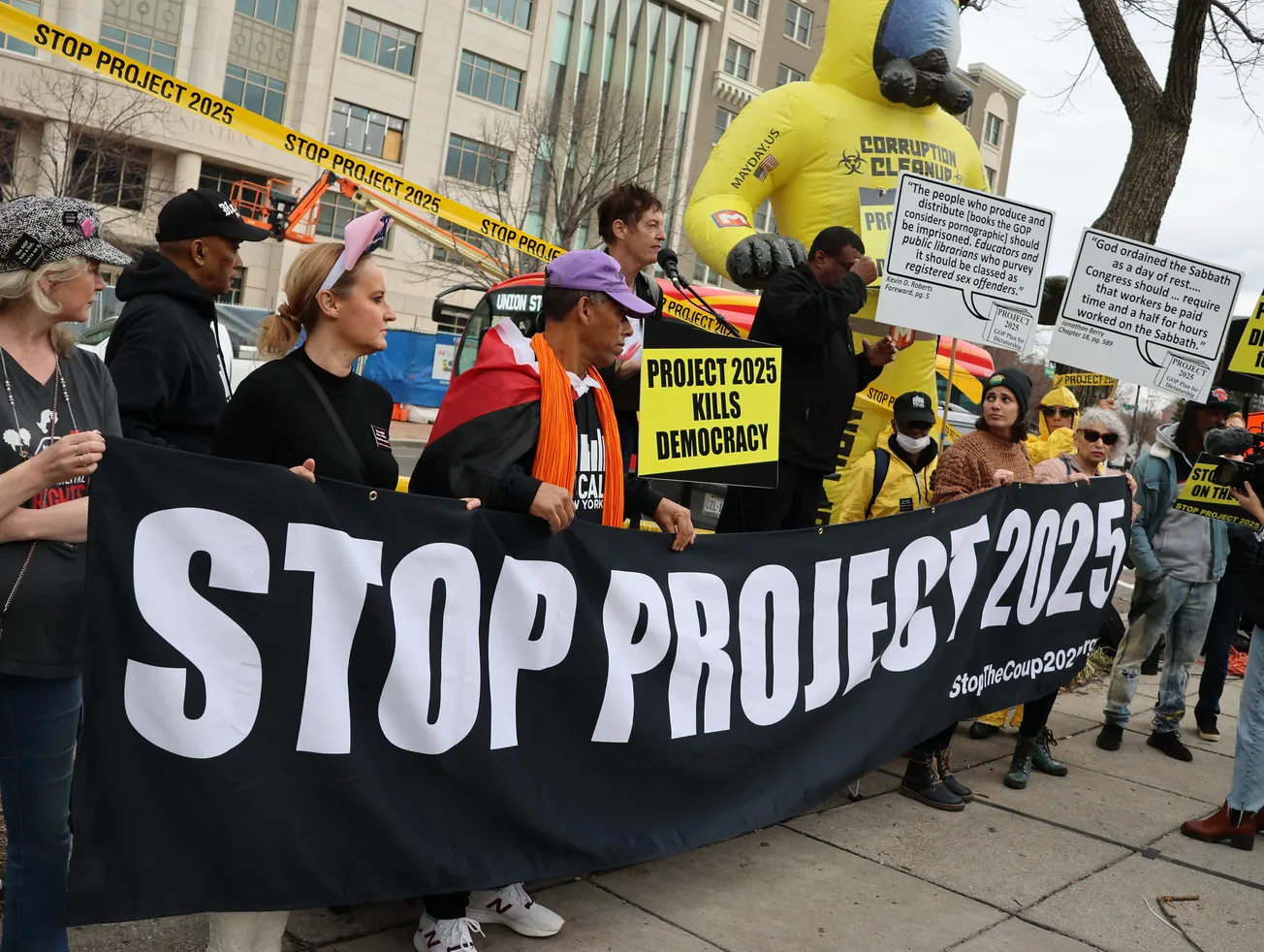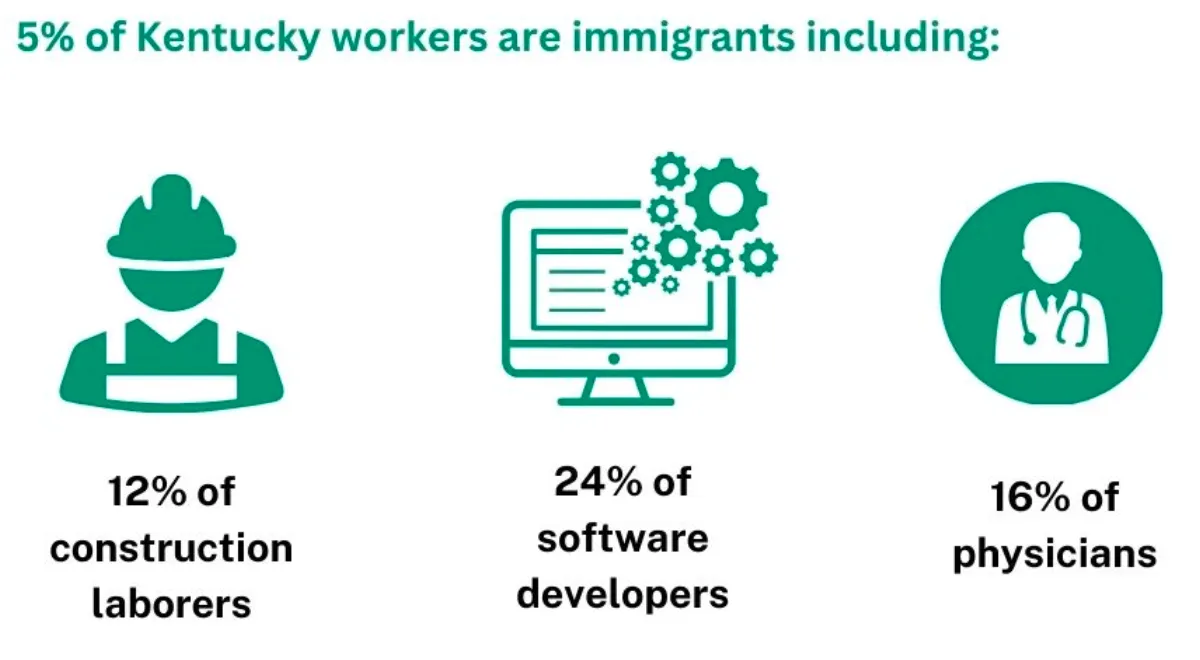Table of Contents
I’m one of the surprisingly large number of us who have been noting the headlines about Project 2025, the politically conservative vision for Donald Trump’s next term as president.
But I decided to read the whole 922 pages after hearing that among its ideas was dismantling the National Oceanic and Atmospheric Administration. Why would they do that? I got curious about what thought processes were behind the plan.
It turns out the recommendation to “break up NOAA,” which oversees the National Weather Service among other offices, offers a tidy example of the kind of thinking repeated throughout the document.
Project 2025 wants to get rid of NOAA because it sees the agency as focusing too much on climate change as a part of studying and describing the weather.
The project stitches together the leading conservative slogans about government and society: people concerned about global warming are fanatics; interest in racial and gender equality is “nonsense;” COVID protection measures in 2020 were un-American; and the National Education Association “is a demonstrably radical special interest group.”
The biggest message of the project is that anyone who doesn’t buy into that world view should be removed from government, regardless or maybe because of, their experience and expertise.
The clearly and often-stated purpose of Project 2025 is for it to be used as an instruction manual for replacing as many nonbelievers in the government, as fast as possible, with people who will be loyal to “the next conservative president.”
The goal even goes beyond remaking government, aiming to engineer the broader society into a utopia described in passages like, “Married men and women are the ideal, natural family structure because all children have a right to be raised by the men and women who conceived them.”
Reading Project 2025 was a chore I wouldn’t recommend, so I’ll offer four insights from the task so you don’t have to do it yourself. (You’re welcome.)
The project’s 32 sections by more than 30 different authors cover topics like “The White House Office,” “Department of State,” “Financial Regulatory Agencies” – you get the idea. They go into excruciating detail about the organizational structure of each part of government, punctuated by regular declarations about how horrible President Biden’s policies are.
Here are my four top reactions.
Project 2025 is a divider, not a unifier
Presidential candidates will often say they intend to be a president for all the people, not just for those from their own party. Not Project 2025.
The official name of the project reveals some of that thinking. The title page actually lists two titles. At the top is Mandate for Leadership: The Conservative Promise. Below that reads, Project 2025 Presidential Transition Project.
I won’t dwell on how desperately that title page needs an editor, but will instead focus on two of the words.
“Mandate” is not the likely result of what November’s election will deliver. Whoever wins, it most likely will be extremely close and hardly a mandate. And “Leadership” isn’t the proper term for imposing a narrow ideology on the entire country.
President Trump has publicly distanced himself from Project 2025, recognizing that a lot of its ideas are really unpopular. But that won’t matter if he wins – the people who wrote Project 2025 will be heavily involved in running a Trump administration. It was published by the influential conservative Heritage Foundation, CNN reports that at least 140 former Trump administration staffers were involved in writing Project 2025, and the project lists 54 organizations represented on its advisory board, including Liberty University and Susan B. Anthony Pro-Life America.
Mandate for Leadership was not written to sit on a shelf.
Project 2025 – lots of slogans, fewer facts
A distinctive feature of Project 2025 is the way it’s peppered with conservative slogans and truisms. The writers generally don’t even bother explaining why liberal positions are bad, they just slap on labels. Efforts at Diversity, Equity, and Inclusion are part of a “woke” agenda. The teaching of Critical Race Theory isn’t even reverse racism, it’s just racism. The notion of institutional racism is simply “false.”
The possible causes and effects of climate change are not discussed at all. But oh boy, does it get the invective treatment.
Numbers tell that story. There are 18 mentions of phrases like “climate fanaticism,” “climate extremism,” “radical climate agenda,” and “climate alarmism.”
DEI policies that are blamed for a variety of ills, including weakening military preparedness, get 35 mentions. Forms of “woke,” “wokeness,” or “The Great Awokening” also get 35 mentions. There are 19 uses of the phrase “Critical Race Theory.”
The project calls for any reference to CRT, DEI, or the climate crisis to be deleted from the federal government.
The sloganeering occasionally goes over the top into goofiness and even cruelty.
The education establishment is filled with “diversicrats.” Bad management in the federal government is “an M Train to Nowhere.” What the nation’s founders really meant by “the pursuit of happiness” is rather “the pursuit of Blessedness.” The Department of Health and Human Services should be known as “The Department of Life.” Women who feel they have to travel to another state to get safe reproductive health care are engaging in “abortion tourism.”
Project 2025 gets its facts wrong in a couple different ways. One is just stating things that aren’t true – like asserting that research shows the Head Start preschool program has “little or no long-term academic value.” (False.)
Or more blanket declarations like saying Biden’s U.S. Agency for International Development “promotes abortion, climate extremism, gender radicalism, and interventions against perceived systemic racism.”
The more intriguing way the report gets it wrong is through footnotes.
Each section ends with between one and seven pages of reference footnotes, for a total of 108 pages. I can only think they weren’t intended to be read because in the few cases where I looked up the sources, they were either not as clear as claimed, or even said the opposite of what was asserted in the main text.
In the section calling for the breakup of NOAA, Project 2025 says private companies like AccuWeather do a better job of forecasting than the agency’s National Weather Service. Following the footnote leads to a news release from — oh, you know who it’s from — AccuWeather, of course. Digging a bit further reveals that among AccuWeather’s information sources is the National Weather Service.
(Author’s note: AccuWeather contacted me after publication to share this statement from last July, quoting its CEO: “AccuWeather does not agree with the view, and AccuWeather has not suggested, that the National Weather Service (NWS) should fully commercialize its operations. The authors of ‘Project 2025’ used us as an example of forecasts and warnings provided by private sector companies without the knowledge or permission of AccuWeather.” You can read the full release at this link.)
Another footnoted claim that caught my eye comes as part of a call to reverse U.S. vehicle mileage standards, which, by the way, save Americans boatloads on their gasoline bills.
The suspicious-sounding sentence reads, “the Biden fuel economy regulations are predicted to have no meaningful effect on global temperature trends over the long term.”
Exactly the opposite, when you follow the footnote. The reference links to a long commentary from The Federal Register that concludes not only will the fuel rules have an (admittedly small) effect, but that the effect will be long-lasting, and therefore, “can have large consequences for health and welfare, and can make an important contribution to reducing the risks associated with climate change.”
And there’s a third way that footnote source contradicts the text. The Federal Register discussion makes the point that fuel efficiency standards contribute to United States’ credibility as a leadership example for other nations.
Those 108 pages of footnotes, it would seem, are only meant to give the appearance of academic credibility.
Project 2025’s alternate reality
When reality doesn’t support the Project 2025 narrative, the writers make it up or ignore it.
Project 2025 asks us to forget what April of 2020 was like, with fear of the brand-new coronavirus keeping people at home, and governments at all levels scrambling to protect people as the death toll started climbing to the 1 million mark.
Easter Sunday was especially difficult. Should churches meet and put their congregations at risk of death?
But those kinds of decisions are not difficult for Project 2025, which writes, “How much risk mitigation is worth the price of shutting down churches on the holiest day of the Christian calendar and far beyond as happened in 2020? What is the proper balance of lives saved versus souls saved?”
This gets personal for me.
My church followed the guidance of our Bishop, who recommended we meet virtually only. My wife and I not only watched on Facebook live as the minister conducted the service from his house, we recorded a message that was played at the beginning the live-streamed service, with us dressed in our Easter finery proclaiming a part of the traditional Easter greeting, “He is risen indeed!”
I don’t believe that caring for our neighbors by attending a virtual Easter service damaged our souls.
I have a relative who died of COVID, unable to physically touch his children in his last hours. Another relative was was a nurse, who put on the protective suit every day to care for patients dying of a sickness they told her was a hoax. You likely have similar stories.
Turning a disaster that called for unity into a deadly divisive political issue was monstrous then, and with Project 2025, still is.
Oh, and then there’s the January 6th attempt to overthrow the government by beating the crap out of police and guards and threatening to kill the vice president. The Justice Department charged more than 1,400 of those attackers with crimes, and more than 900 have been convicted.
You might think that threat of violence against the government would be worth a discussion somewhere in the 922 pages. But you would be wrong. There’s only a single reference to January 6, and that’s in the Department of Homeland Security chapter, criticizing the Secret Service for allowing Kamala Harris to get too close to a pipe bomb discovered outside the Democratic National Committee office.
January what?
Project 2025 is not fun any more
Project 2025 has turned into an exploding cigar for the Republican Party.
It’s caught on with voters. An amazing two-thirds of them know about this piece of work, and it rings true to them as something a Trump administration would likely try to carry out. Democrats have been aggressively using it to attack Trump. In reply, Trump and his staff have criticized the report, recognizing the political liability of its positions, like the one summing up the project’s anti-reproductive rights rhetoric with, “The Dobbs decision is only the beginning.”
In July, the head of the Project 2025 group “resigned.”
It makes me think of an iconic scene in a one of my favorite movies, Remember the Titans.
The scene takes place in a newly-integrated high school gym in the 1970s. A group of African-American students is celebrating after hearing that their new football coach would an African-American. That is, until Denzel Washington walks in and lets them know how much work lies ahead for them. Spoiler alert: a black student transforms from a happy dance to conceding to his coach that football is, “Zero fun, sir.”
Project 2025 projects swagger and giddy excitement over the prospect of imposing its conservative agenda on American government, and even on American society. The last chapter is titled “Onward!”
The cockiness summed up by that exclamation point has come back to haunt Project 2025.
As Kamala Harris said, “Can you believe they put that in writing?”
--30--







